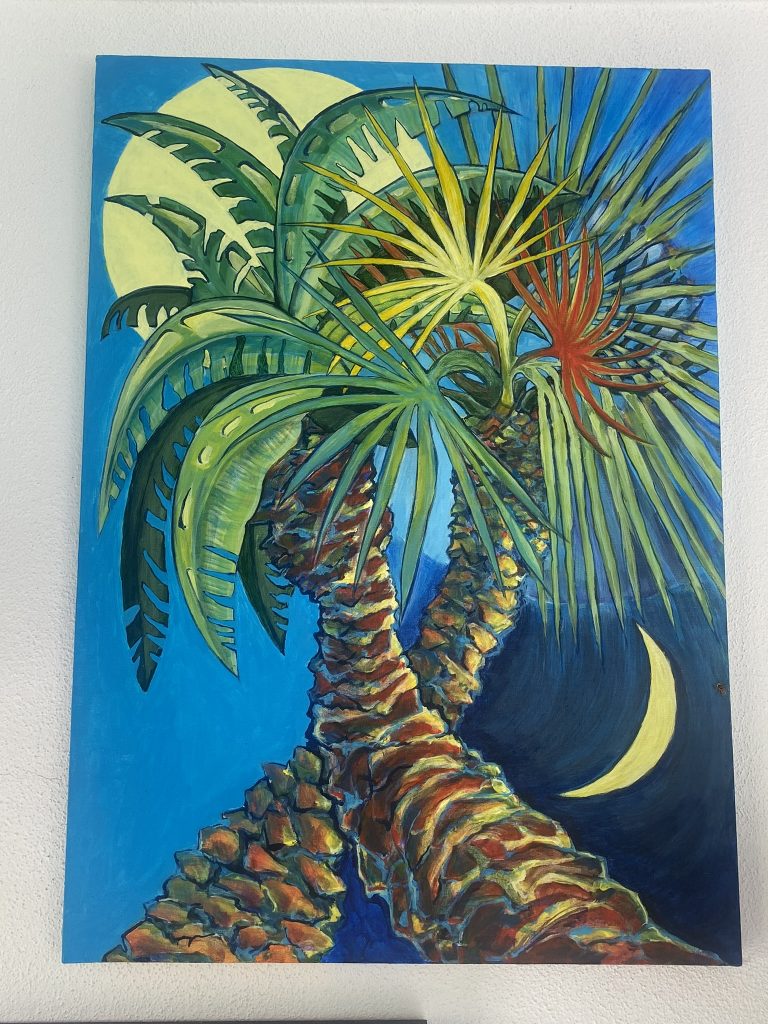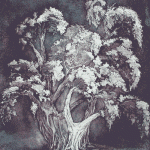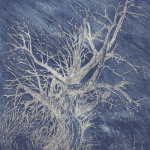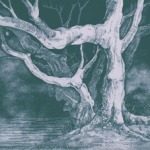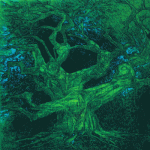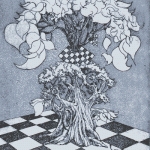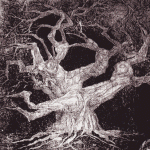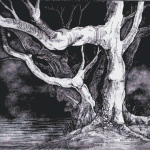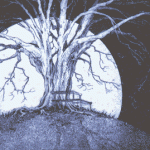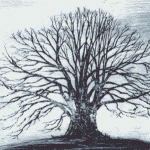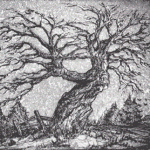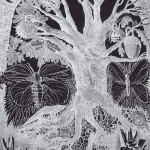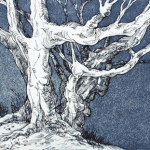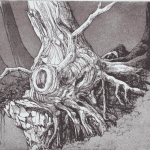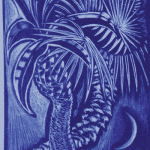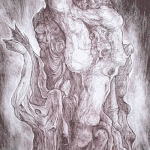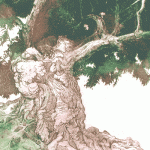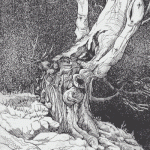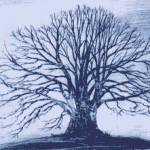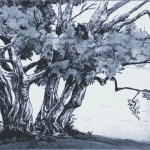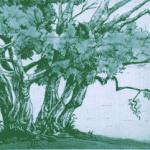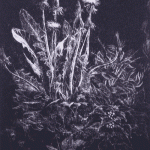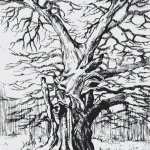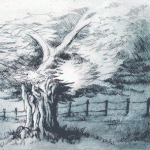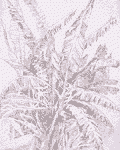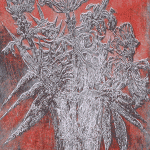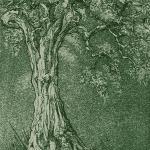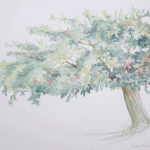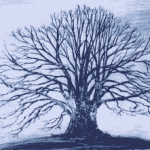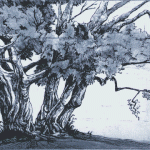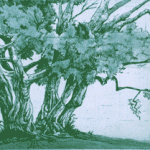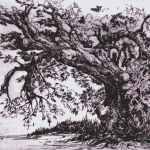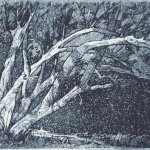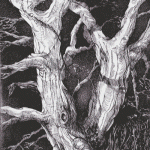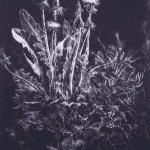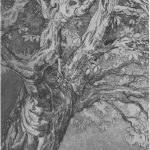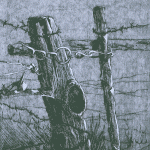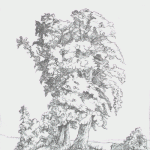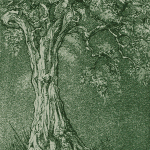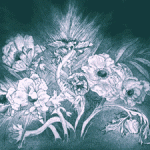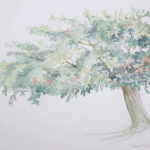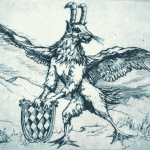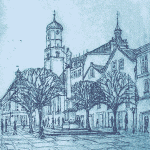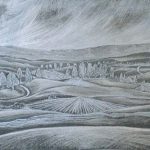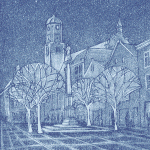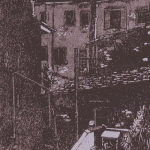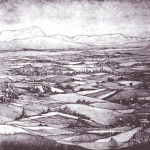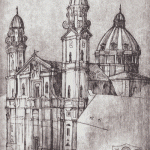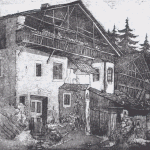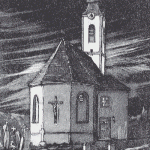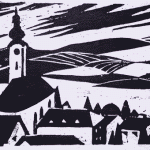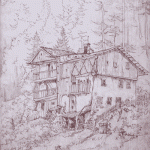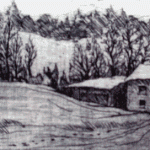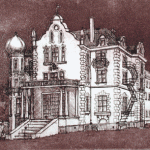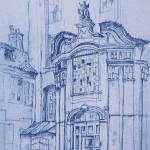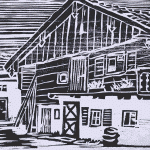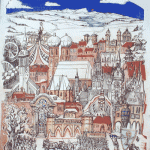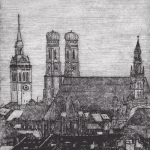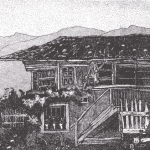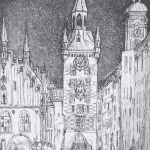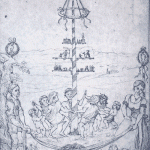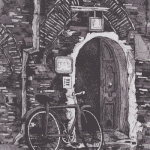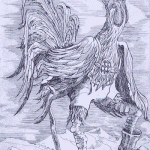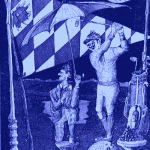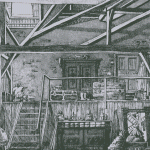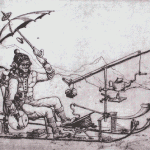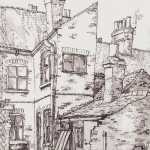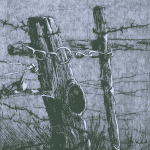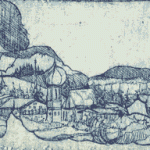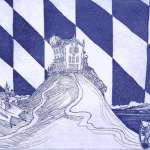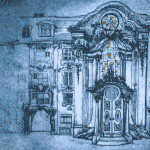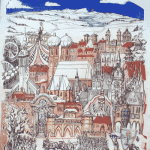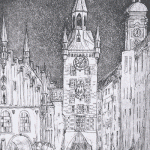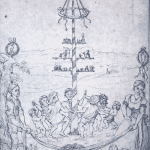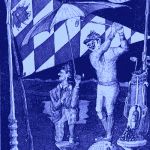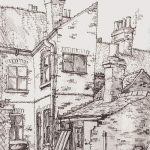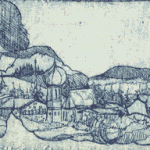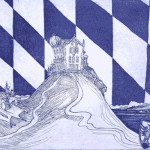
Michael John Webster is a British-German artist based in Portugal, famous for his engravings and lively still-lives.
His versatile talent is expressed in various mediums, including sculptures, water colours and sketches.
The Art of Engraving
The art of engraving
and its significance.
ENGRAVINGS OR ETCHINGS ?
The term “engraving”, is often used in graphic art terminology as a collective heading or even as a loose definition for all forms of print (“intaglio”) work. Engraving is more accurately the act of incising directly into the surface of a material using a cutting implement, usually a burin. It also includes the techniques of drypoint and mezzotint or any other method of marking a surface directly.
The process of etching normally refers to the action of corroding lines etc. into a metal plate with acid and also includes the techniques of soft ground etching (vernis mou), and aquatint.
Of major significance to the art of engraving is its ability to duplicate images thus enabling the artist to “keep one for him/ herself ” as well as providing an affordable work of art for a larger audience. The major elements in this art being the image on the plate and the ink and the paper on which the image is printed.
The engraver in contrast to the painter or sculptor does not have a constant control of his/her work as s/he is working with a mirror image on the plate and usually at a close distance to it, there are also many ways in which technical variations can be used to vary the image in the various phases of the production of the final print…..the finished product? Through the actual printing process many variations can be used to enhance the final image itself.
Normally a particular subject or motif will be produced as a limited edition, each print of this edition being carefully numbered is considered to be an original. It is customary to express this numbering in pencil on the left hand side of the actual print, in the form 3/100 for example. This is informing the observer that this particular print is the 3rd print from an edition consisting of a total of 100. Generally speaking there is no noticeable difference in quality of the prints if the edition is relatively small. Connoisseurs however would nonetheless value the print more highly the lower the numbering. Number 1 of 100 being the most valuable.
Brief History of Etching and Engraving
The desire to scratch or incise lines on a surface, is in all probability, the oldest art of mankind. Primitive man cut lines into rocks and bones and scratched them onto clay or pottery. A universal habit. Every monument new or old is covered as far as can be reached with graffiti of the period. The walls of prison cells and the desks of schoolchildren are evidence of these idle doodlings – the trees of forests bear evidence of lovers.
Why?
Mortal man seemingly possesses an irresistible desire to express and record his/ her presence and transmit thoughts or desires, the purposes of course are manifold, an expression of love, or humour, the pursuit of money or the glorification of his/her gods.
How?
These marks made on a surface, usually wood or metal, are transferred onto paper by the printing process in which the marks are first filled with ink, the excess ink is then removed from the surface by careful wiping with gauze and finally the print is then made by pressing the paper onto this inked surface (usually using a special printing press).
When?
Engraving is one of the oldest and most beautiful forms of expression. From the earliest times men have decorated their possessions with their personal character transforming them from merely useful objects into things of beauty and importance.
The woodcuts of the 14th century is the most ancient engraving technique which was used to produce prints, in all probability derived from a wish to print patterns on fabrics and on walls.
Following the discovery of metals, particularly those of the rarer and softer types (copper and zinc) the possibilities of engraved decoration were greatly enhanced. The decoration of suits of armour bears testimony to the skill of the engravers of this time.
The technique was really applied for the first time in Italy and Germany in book printing. The rapidly improving availability and quality of paper, the artist wishing to reach a wider public coinciding with the wish to distribute and strengthen the teaching of Christianity.
One of the first artists to use the printing process was Martin Schoengauer in the 15th century, followed by Duerer , (the master of technical brilliance and craftsmanship) and by Lucas van Leyden in Holland and in Italy by Mantegna
The history of line engraving is however to a certain extent one of magnificent beginnings as a means of expression which rapidly deteriorated in the 17th century into a process of reproduction. Many well know artists, Raphael being a case in point, was quick to perceive the propaganda value of a wide circulation of his paintings in the print form – he was indeed fortunate to have at his disposition such a fine craftsman as Ramondi who made prints from his paintings.
At the turn of the 16th century Hercules Seghers (1589-1635) was the great experimenter using for the first time coloured inks and coloured paper, it was he who was to have such a great influence on probably the greatest etcher of all time Rembrandt.
Rembrandts etchings with their spontaneity and freedom remain masterful to the present day.
In Italy, besides the works of Tiepolo ( who later moved to Spain and is credited with having influenced Goya and his “los Capricios”) of particular note are the dramatic fantasy views of Piranesi, most noteably his views of the interiors of prisons.
In 18th Century England the high point was reached with Williiam Blake, Hogarth, Rawlindson and Gilray. Their work being particularly widely circulated amongst the middle classes in England and being important in view of its content – the social commentary on the state of the nation.
The greatest figure in etching during the late 18th Century and early 19th Century and since Rembrandt was probably Goya who made exceptional use of the recently invented technique of aquatint in many of his series of prints particularly in “los Capriccios”.
Thereafter with the ascent of photography its use as a reproductive medium was made obsolete and it fell into neglect. This indeed was to become its strength …its revival as a creative medium freed from the tedious yoke of verisimilitude reawakened at the turn of the 19th Century. Hayter with his famous “Atelier 17 “in London being the major protagonist. Whistler is also worthy of note during this period. Nearly all the great contemporary artists have experimented with this technique from Nolde to Kokoschka and Kathe Kolwitz, Miro, Dali and Picasso.
Engraving remains in its history inseparable from the overall artistic activity.
A brief chronological development
Following the “one off “ decorations of ancient Greece and Rome it was first in the 15th Century that these surface scratching were used to produce images on paper.
14th Century – woodcuts were used to produce playing cards and religious motifs.
15th Century – metals were used as surfaces notable artists being Martin Schongauer and Dürer
16th Century – Rembrandt with his biblical illustrations
17th Century – Piranesi with his fantasy illustrations of prisons and Hogarth’s social commentaries.
18th Century – Turner uses the Mezzotint (English manner) to illustrate depth and atmosphere.
– Goya uses Aquatint to perfection in his series of prints “los Capricios”
Contemporary – nearly all great artists have experimented with it, most notably however, Nolde , Kokoschka, Picasso, Miro, and Dali.
